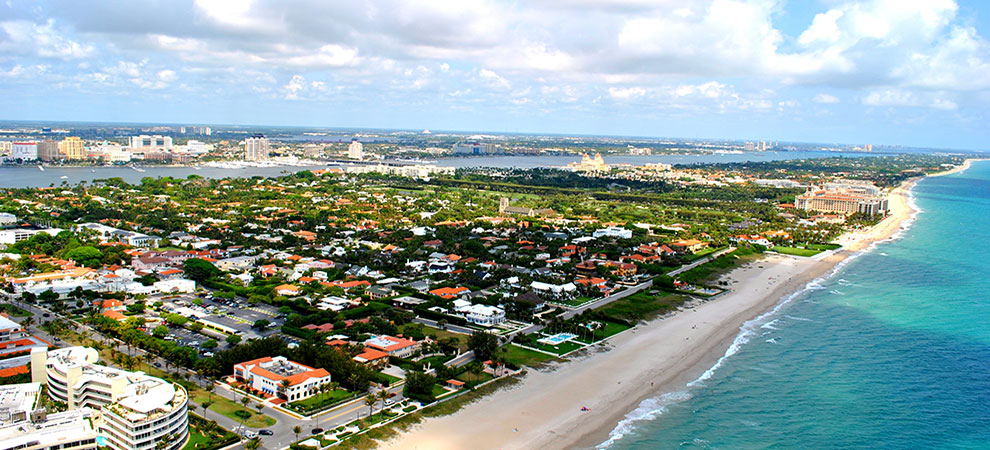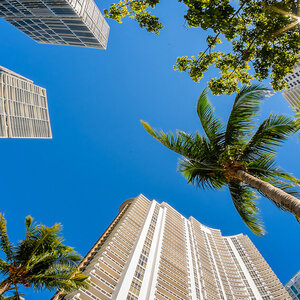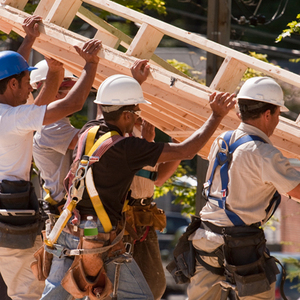The WPJ
THE WORLD PROPERTY JOURNALReal Estate Facts Not Fiction
Residential Real Estate News

Driven by the Affluents' Fear of COVID, Luxury Home Sales Explode in U.S.
Residential News » Palm Beach Edition | By Michael Gerrity | December 24, 2020 8:15 AM ET
Surge a Record 61 Percent, Quadrupling Pre-Pandemic Sales Growth in 2019
Redfin is reporting this week that U.S. luxury home sales have surged 60.7 percent year over year during the three months ending November 2020, the biggest jump since at least 2013.
That nearly quadrupled the growth seen during the three months ending Feb. 29, before the coronavirus was declared a pandemic. It also far outpaced the 14.8 percent increase in sales of mid-priced homes and the 6.8percent uptick in sales of affordable homes, as America's "K-shaped" economic recovery put more money into the pockets of the country's wealthiest homebuyers.
The report is based on an analysis that divided all U.S. residential properties into five price tiers based on Redfin Estimates of the homes' market values.
As the U.S. unemployment rate has declined, sales of affordable homes have made a comeback after plunging around 30 percent in the spring. But growth in this segment still pales in comparison to growth in the luxury tier, as high-earning Americans take advantage of stock-market gains, record-low mortgage rates and the flexibility to work from anywhere, said Redfin Chief Economist Daryl Fairweather.
"Low- and middle-income Americans aren't out of the woods when it comes to this recession. Affluent Americans are out of the woods, and they're at their beach houses sipping margaritas," Fairweather said. "When times are tough, banks are most likely to dole out home loans to the people who need them the least."

The 49 most populous U.S. metropolitan areas all experienced at least double-digit growth in luxury-home sales during the three months ending Nov. 30. The biggest jump was in Newark, NJ, where sales of luxury homes skyrocketed 101.6 percent year over year. It was followed by West Palm Beach, FL, up 97.1 percent, and San Antonio, TX, up 82.4 percent. Riverside, CA and Jacksonville, FL rounded out the top five, both up about 80 percent. Even Cincinnati--the market with the slowest growth rate--saw luxury sales rise 16.7 percent.
"Americans are pouring money into their homes. Sometimes that means remodeling, and sometimes it means purchasing a luxury beach house in Florida," said Delray Valle, Redfin's market manager in Palm Beach. "We've always seen luxury buyers come to West Palm Beach from New York and California, but this year, they're also coming from Maryland, Las Vegas, Chicago and other midwestern states. Florida is normally a second-home state, but now it's shifting to a primary-home state."
With affluent Americans on the move, the market for vacation homes--many of which are luxury properties--has been on fire. Demand for second homes soared 100 percent year over year in October, surpassing the 50 percent increase in demand for primary homes. And many of the country's hottest neighborhoods, such as Lake Tahoe and the Lakes Region of New Hampshire, are popular resort destinations full of high-end houses.
An Expanding Supply of Luxury Homes Is Allowing Sales to Flourish
The number of luxury homes for sale climbed 2.3 percent year over year during the three months ending Nov. 30, while the supply of homes in all other price tiers declined.
The growing supply of luxury homes is one factor supporting surging luxury-home sales. Luxury inventory is on the rise in part because affluent homeowners have had the means to put their homes up for sale and move elsewhere during the pandemic. New listings of luxury homes jumped 31.5 percent during the three months ending Nov. 30; more than double the growth of any other price tier.
Luxury-home supply will likely continue to expand, especially as builders ramp up construction, Fairweather said. U.S. building permits rose 8.5 percent year over year in November to a seasonally-adjusted annual rate of 1.6 million, and Fairweather believes builders will increasingly focus on luxury homes.
Meanwhile, the supply of affordable homes may keep growing at a relatively slow pace, at least until the pandemic is over; the owners of those homes are more likely to stay put as a result of financial uncertainty and federal forbearance policies that allow Americans to remain in their homes even if they can't pay their mortgages.
Price Growth Converges for Luxury and Affordable Homes
Up until the coronavirus pandemic, prices of affordable homes had been increasing at a faster clip than prices of high-end homes. Now, prices across all tiers are growing at a similar rate.
The most affordable bucket of homes saw prices grow 8.6 percent during the three months ending Nov. 30, comparable to the luxury tier's 9.0 percent growth. That's a much smaller gap than during the three months ending Feb. 29, when prices of the most affordable homes were up 9.1 percent, versus growth of just 4.9 percent for luxury homes.
Luxury price growth has caught up to affordable price growth as a result of increasing competition in the luxury market, Fairweather said.
One indication of competition is how quickly homes are selling. The typical luxury home that was for sale during the three months ending Nov. 30 spent 55 days on the market--27 fewer days than the same period a year earlier. That compares with 15 fewer days for mid-priced homes and 11 fewer days for affordable homes.
Redfin is reporting this week that U.S. luxury home sales have surged 60.7 percent year over year during the three months ending November 2020, the biggest jump since at least 2013.
That nearly quadrupled the growth seen during the three months ending Feb. 29, before the coronavirus was declared a pandemic. It also far outpaced the 14.8 percent increase in sales of mid-priced homes and the 6.8percent uptick in sales of affordable homes, as America's "K-shaped" economic recovery put more money into the pockets of the country's wealthiest homebuyers.
The report is based on an analysis that divided all U.S. residential properties into five price tiers based on Redfin Estimates of the homes' market values.
As the U.S. unemployment rate has declined, sales of affordable homes have made a comeback after plunging around 30 percent in the spring. But growth in this segment still pales in comparison to growth in the luxury tier, as high-earning Americans take advantage of stock-market gains, record-low mortgage rates and the flexibility to work from anywhere, said Redfin Chief Economist Daryl Fairweather.
"Low- and middle-income Americans aren't out of the woods when it comes to this recession. Affluent Americans are out of the woods, and they're at their beach houses sipping margaritas," Fairweather said. "When times are tough, banks are most likely to dole out home loans to the people who need them the least."

The 49 most populous U.S. metropolitan areas all experienced at least double-digit growth in luxury-home sales during the three months ending Nov. 30. The biggest jump was in Newark, NJ, where sales of luxury homes skyrocketed 101.6 percent year over year. It was followed by West Palm Beach, FL, up 97.1 percent, and San Antonio, TX, up 82.4 percent. Riverside, CA and Jacksonville, FL rounded out the top five, both up about 80 percent. Even Cincinnati--the market with the slowest growth rate--saw luxury sales rise 16.7 percent.
"Americans are pouring money into their homes. Sometimes that means remodeling, and sometimes it means purchasing a luxury beach house in Florida," said Delray Valle, Redfin's market manager in Palm Beach. "We've always seen luxury buyers come to West Palm Beach from New York and California, but this year, they're also coming from Maryland, Las Vegas, Chicago and other midwestern states. Florida is normally a second-home state, but now it's shifting to a primary-home state."
With affluent Americans on the move, the market for vacation homes--many of which are luxury properties--has been on fire. Demand for second homes soared 100 percent year over year in October, surpassing the 50 percent increase in demand for primary homes. And many of the country's hottest neighborhoods, such as Lake Tahoe and the Lakes Region of New Hampshire, are popular resort destinations full of high-end houses.
An Expanding Supply of Luxury Homes Is Allowing Sales to Flourish
The number of luxury homes for sale climbed 2.3 percent year over year during the three months ending Nov. 30, while the supply of homes in all other price tiers declined.
The growing supply of luxury homes is one factor supporting surging luxury-home sales. Luxury inventory is on the rise in part because affluent homeowners have had the means to put their homes up for sale and move elsewhere during the pandemic. New listings of luxury homes jumped 31.5 percent during the three months ending Nov. 30; more than double the growth of any other price tier.
Luxury-home supply will likely continue to expand, especially as builders ramp up construction, Fairweather said. U.S. building permits rose 8.5 percent year over year in November to a seasonally-adjusted annual rate of 1.6 million, and Fairweather believes builders will increasingly focus on luxury homes.
Meanwhile, the supply of affordable homes may keep growing at a relatively slow pace, at least until the pandemic is over; the owners of those homes are more likely to stay put as a result of financial uncertainty and federal forbearance policies that allow Americans to remain in their homes even if they can't pay their mortgages.
Price Growth Converges for Luxury and Affordable Homes
Up until the coronavirus pandemic, prices of affordable homes had been increasing at a faster clip than prices of high-end homes. Now, prices across all tiers are growing at a similar rate.
The most affordable bucket of homes saw prices grow 8.6 percent during the three months ending Nov. 30, comparable to the luxury tier's 9.0 percent growth. That's a much smaller gap than during the three months ending Feb. 29, when prices of the most affordable homes were up 9.1 percent, versus growth of just 4.9 percent for luxury homes.
Luxury price growth has caught up to affordable price growth as a result of increasing competition in the luxury market, Fairweather said.
One indication of competition is how quickly homes are selling. The typical luxury home that was for sale during the three months ending Nov. 30 spent 55 days on the market--27 fewer days than the same period a year earlier. That compares with 15 fewer days for mid-priced homes and 11 fewer days for affordable homes.
Sign Up Free | The WPJ Weekly Newsletter
Relevant real estate news.
Actionable market intelligence.
Right to your inbox every week.
Real Estate Listings Showcase
Related News Stories
Residential Real Estate Headlines
- U.S. Home Sales Continue Slump in April Despite Growing Inventory
- Opportunity Zone Home Prices Surpass National Growth in Half of U.S. Markets
- Spring Home Sales Sputter in U.S. as High Costs Weigh on Buyers
- Ireland's Residential Rents Surge in Early 2025, Fastest Rise in Two Decades
- U.S. Homebuilder Confidence Drops Sharply in May, Hits 3 Year Low
- U.S. Cities Where Renters Need $100K Salary to Live Doubles Since 2020
- Tuscany's Property Boom Driven by Wealthy Foreign Buyers
- Home Price Appreciation Continues to Slow in U.S.
- California Home Sales Dip in March Amid Rising Economic Concerns
- U.S. Mortgage Rates Continue Downward Trend
- Pending Home Sales in U.S. Increase in March
- U.S. Home Values Flatline in March as Sellers Outnumber Buyers
- Greater Miami Area Residential Sales Cool in March
- NAR Reports Existing Home Sales Tumble in March, Hit 16-Year Low
- U.S. New Home Sales Uptick in March
- Florida's California Moment: Skyrocketing Housing, HOA and Insurance Costs Take Center Stage in 2025
- Home Seller Concessions Climbing as Market Conditions Shift in U.S.
- SENTIENT MORTGAGE Consumer-to-Lender AI Matching Engine Commences Development
- U.S. Homes Sold at Slowest Pace in 6 Years in March, Demand Sluggish
- Trump Tariffs Test U.S. Housing Markets Reliance on International Trade
- India Home Prices Nationwide Climbed 9 Percent Annually in 2024
- U.S. Home Remodeling Industry Sentiment Declines in Early 2025
- Canadian Home Sales Slide in February Amid U.S. Trade Tensions
- Americans Spent $603 Billion on Home Remodeling Projects in 2024
- U.S. Mortgage Demand Spikes 20 Percent in Early April as Rates Drop
- Las Vegas Area Home Prices Uptick 4.3 Percent Annually in March
- Single-Family Rent Growth in U.S. Trends Upward in 2025
- U.S. Mortgage Rates Tick Down Post Trump Tariffs Commencement
- President Trump's 'Liberation Day' Tariffs Potential Impact on the U.S. Housing and Mortgage Markets
- Baby Boomers Biggest Cohort of U.S. Home Buyers in 2025 as Millennials Decline
- U.S. Monthly Housing Payments Hit Record High in 2025
- U.S. Pending Home Sales Uptick in February
- Global Prime Residential Rent Slowdown Continued in Late 2024
- Ireland Home Price Inflation Hits 8 Year High in Early 2025
- Existing Home Sales in America Uptick in February
- Great Miami Area Residential Sales Decline 15 Percent Annually in February
- Mortgage Rates Uptick in Mid-March, Ending 9-Week Decline in U.S.
- World Property Ventures Builds the Future of Real Estate with New Funding Round
- U.S. Builder Sentiment Declines Amid Economic Uncertainty and Rising Costs
- Black Homeownership Rates in U.S. Enjoy Largest Annual Increase of All Racial Groups
Reader Poll
Marketplace Links
This website uses cookies to improve user experience. By using our website you consent in accordance with our Cookie Policy. Read More





